“I can’t change the direction of the wind, but I can adjust my sails to always reach my destination.”
Jimmy Dean
Have you adjusted your sails? If you think AI isn’t going to leave you in the dust, while you try to manually type each word of those next few blog articles, you are already behind your competition. Content decay is set to accelerate with the AI revolution.
The fusion of artificial intelligence (AI) and marketing has ignited a revolution. AI’s ability has given digital marketing agencies a valuable toolkit.
Let’s explore how digital marketing agencies are utilizing AI to optimize SEO, manage paid media, and enhance web development.
Search Engine Optimization (SEO) revolves around the art and science of optimizing websites to rank higher on search engine results pages (SERPs). AI can contribute immensely to this field by making SEO efforts more efficient and accurate.
Keyword Optimization and Content Creation: AI-powered tools like MarketMuse and Clearscope leverage natural language processing (NLP) to provide marketers with the most relevant keywords and content ideas based on their target audience’s search behavior. This allows for the creation of content that resonates with the audience and ranks well in search engines.
We don’t recommend using AI to create your final products, when it comes to content. However, it is an excellent tool for creating outlines or rough first drafts of SEO copy.

Predictive Analysis: AI can also analyze search trends and forecast future changes. Tools like BrightEdge use machine learning algorithms to predict which keywords will gain or lose popularity in the future. This helps marketers stay ahead of the competition by aligning their content strategy with predicted trends.
User Experience (UX) Optimization: Google’s RankBrain, an AI algorithm, factors user experience into page rankings. AI tools can evaluate a website’s UX by analyzing click-through rates, bounce rates, and user dwell time, providing insights to make websites more user-friendly and thus more likely to rank highly.
Paid media management involves the purchase and optimization of digital advertisements. AI can be a game-changer for improving targeting, personalization, and budget allocation.
Programmatic Advertising: AI-driven programmatic advertising platforms automatically buy and sell digital ad space in real-time, ensuring ads reach the right audience at the right time. AI algorithms analyze millions of data points to determine the optimal ad space, reducing the cost of acquisition and increasing ROI.
Dynamic Creative Optimization (DCO): DCO tools use AI to create personalized ads based on individual consumer behavior, demographics, and context. Adacado‘s platform creates variations of ads in real-time to cater to each user’s unique profile.
Budget Optimization: Albert uses AI to manage and optimize ad spend across different platforms. By learning from campaign performance, these tools can reallocate budgets in real-time to the most profitable channels, maximizing ROI.
AI’s role in web development has been growing steadily, contributing to more efficient processes, better user experiences, and more accessible websites. However, we don’t recommend keeping expert web developers totally out of the loop as AI is simply a language model in most cases, and does not have the ability to provide human context.
Automated Web Development: Tools like Wix’s ADI (Artificial Design Intelligence) can design and develop websites based on user inputs. This significantly reduces the time taken to build websites and makes web development more accessible.

User Experience and Personalization: AI can analyze user behavior to personalize web experiences. Tools like Ezoic use machine learning to personalize content, layouts, and calls-to-action for each visitor, improving engagement and conversion rates.
Accessibility Optimization: AI can also help make websites more accessible. Tools like accessiBe use AI to automatically detect and fix accessibility issues, ensuring websites comply with ADA and WCAG guidelines.
Accelerated Output: By leveraging large language models such as ChatGPT, developers can add large efficiencies to their day-to-day by.
So its clear to see, AI is a powerhouse for modern digital marketing agencies. By leveraging AI in SEO, paid media management, and web development, agencies can streamline their operations, deliver more personalized and efficient marketing strategies, and ultimately drive improved business outcomes.
As AI technology continues to advance, we can expect even more innovative applications in the digital marketing realm.
Don’t let your competitors cash in on AI, while you wait on your agency to catch up.
Contact us to learn more about how we can drastically increase the efficiency of your digital marketing campaigns with AI.
The complexities and dynamic nature of the modern digital landscape can be overwhelming for many businesses. To effectively navigate this terrain, companies are increasingly turning to specialized entities to manage their marketing efforts – a Digital Marketing Agency as an Agency of Record (AOR).
This article delves into the benefits of contracting a digital marketing agency as an AOR and why it could be the strategic move your business needs.
One of the primary reasons to engage a digital marketing agency as your AOR is their expertise. Such agencies have skilled teams with specialized knowledge in various areas, including SEO, PPC, social media marketing, email marketing, content marketing, and more.
As a result, you get access to an array of skills that can be leveraged to enhance your digital presence and competitiveness.
Contracting an agency of record can lead to significant time and cost savings. With an AOR, you eliminate the need to hire and train an in-house marketing team, thereby reducing overhead costs.
Additionally, it frees up time for you to focus on core business operations, knowing that a competent team is managing your marketing needs.
An AOR ensures consistency across all marketing initiatives. They are responsible for aligning the company’s brand image, voice, and message across various channels and platforms.
This coherence strengthens brand recognition and reinforces your business’s unique value proposition to consumers.

Digital marketing agencies are always up-to-date with the latest trends, tools, and technologies in the industry. By engaging an AOR, your business can harness these advancements to stay ahead of competitors, optimize marketing strategies, and improve results.
As your business grows, so do your marketing needs. With an agency of record, you can easily scale your marketing efforts in response to business expansion or market changes.
Agencies have the resources and flexibility to adjust to your shifting needs, ensuring continuous strategic support.
Digital marketing agencies have the tools and expertise to measure and analyze campaign performance. They can provide detailed reports and actionable insights, enabling your business to make data-driven decisions and continually optimize marketing strategies.
Contracting an AOR often leads to a long-term strategic partnership. Over time, the agency develops a deep understanding of your business, target audience, and market dynamics.
This familiarity allows them to craft more personalized and effective marketing strategies, leading to better results in the long run.
In an increasingly competitive digital marketplace, contracting a digital marketing agency as an agency of record offers numerous advantages. From their expertise and access to the latest tools, to time and cost efficiencies, scalability, and strategic long-term partnership, these benefits make the proposition of hiring an AOR a compelling one.
While it’s crucial to consider your specific needs and circumstances, engaging an AOR can be a strategic decision that accelerates your business growth and fortifies your market position.
At SEO Succor, we take great pride in building custom omnichannel digital marketing strategies for our clients.
Contact us today to learn more about how we can start working as your Agency of Record! Read our client reviews to learn more about our results.
Schedule a complementary consultation with one of our digital marketing experts.
In the ever-evolving digital landscape, the rules of engagement are perpetually shifting. Traditional single-channel marketing strategies are rapidly becoming obsolete, replaced by a customer-centric and more comprehensive approach – omnichannel digital marketing. To stay competitive, businesses need to understand and embrace this strategic shift.
Writing this article, we’ll explore the concept of omnichannel digital marketing, its benefits, strategies, and how you can implement it to enhance your marketing efforts.
Omnichannel digital marketing is a modern marketing strategy that focuses on delivering a consistent, personalized experience to customers across all touchpoints.
Unlike multichannel marketing, which merely ensures presence across multiple platforms, omnichannel marketing emphasizes seamless and integrated experiences irrespective of the chosen platform – be it mobile apps, social media, websites, or physical stores.
In essence, omnichannel marketing is about understanding your customer’s journey and ensuring they can transition effortlessly between channels while keeping the communication relevant and consistent.
In an era where customer preferences and digital technologies are rapidly evolving, companies should choose omnichannel digital marketing to create a seamless, personalized customer experience across multiple touchpoints. It enables businesses to maintain consistency in their brand’s message, voice, and image while also collecting valuable data from multiple channels for better understanding customer behavior and preferences.
This approach leads to improved customer engagement, increased conversion rates, customer loyalty, and ultimately higher sales, ensuring that businesses stay competitive in the digital marketplace.
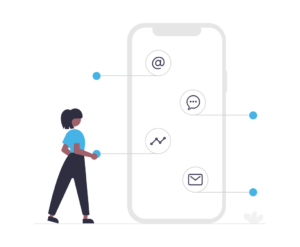
To summarize, omnichannel digital marketing can offer an organization:
The future of digital marketing is omnichannel. Businesses that don’t adapt will find themselves left behind in a world where customers demand more personal, more relevant, and more seamless interactions. Start implementing an omnichannel digital marketing strategy today and elevate your business to new heights.
Implementing omnichannel marketing might seem daunting initially, but the benefits it brings are immense. Not only does it create an enhanced customer experience, but it also provides businesses with a wealth of data to continuously optimize their strategies.
At SEO Succor, we take great pride in our omnichannel approach. Our roots may be in SEO, but we have the staff and the experience to integrate all of your channels.
Contact us today to learn more about how we can assist.
Schedule a complementary consultation with one of our omnichannel experts.
In digital marketing, a great landing page holds the power to captivate visitors, generate leads, and drive conversions. A high-converting landing page is a powerful tool that allows you to make a strong first impression and guide your audience towards taking the desired action.
Actively practicing conversion rate optimization (CRO) best practices can take you a long way “right out of the box.”
Learn more about our landing page best practices by diving into this article.
Let’s explore the seven essential components that contribute to the success of a landing page.
The headline is the first thing visitors see when they land on your page. It should instantly grab their attention and clearly communicate the value proposition or offer.
Craft a headline that is concise, compelling, and aligns with the visitor’s expectations. Use persuasive language to pique curiosity and entice them to explore further.
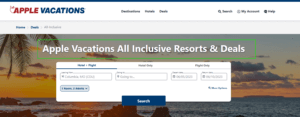
A Unique Selling Proposition (USP) is a clear and concise statement that articulates the unique value or benefit that a product or service provides to its target audience, setting it apart from competitors.
The USP focuses on a distinctive quality or feature that makes a business stand out in the market.
The content on your landing page should be concise, focused, and aligned with the visitor’s intent. Clearly communicate the benefits of your product, service, or offer, highlighting what sets it apart from the competition.
Use persuasive copywriting techniques to engage your audience, emphasize key points, and address their pain points or desires.
Keep landing page copy paragraphs short, use bullet points or subheadings for easy scanning, and consider incorporating visual elements such as images or videos to enhance engagement.
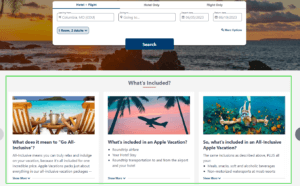
A strong call-to-action is the driving force behind conversions on a landing page. Clearly state the desired action you want visitors to take, whether it’s signing up for a newsletter, making a purchase, or downloading a resource.
Use action-oriented language and create a sense of urgency to motivate visitors to act now. Make the CTA prominent, visually appealing, and easy to locate on the page. If using a call-to-action button, make sure the button colors contrast well with the text color within the CTA button.
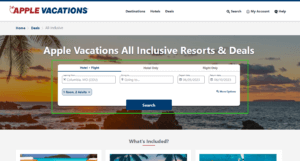
Building trust is crucial on a landing page. Incorporate social proof elements such as testimonials, social media reviews, Google Business Profile reviews, case studies, or success stories to showcase the positive experiences of previous customers.
Highlight any notable achievements, industry affiliations, or certifications that add credibility to your brand. Social proof helps alleviate concerns and instills confidence in your audience, making them more likely to convert.
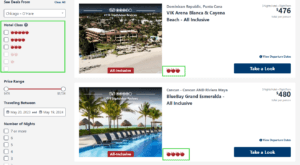
In today’s mobile-centric world, a great landing page must be optimized for mobile devices. Ensure that your page is responsive and provides a seamless user experience across different screen sizes.
Pay attention to the page load speed, as slow-loading pages can lead to high bounce rates. Optimize images, minimize code, and prioritize mobile-friendly design principles to ensure a smooth browsing experience.
If your landing page includes a form or conversion process, keep it simple and streamlined. Ask for only the essential information you need to follow up effectively. Other aspects to consider when designing your forms:
Lengthy forms can deter visitors from completing the process. However, sometimes this can be the goal – if say, you want to improve lead quality, adding more questions to your form can sometimes create higher quality leads.
Use form validation to minimize errors and provide clear instructions to guide users through the steps.
Consider offering incentives, such as a free trial or exclusive content, to encourage form completion.
Building a great landing page is an iterative process. Continuously test different elements such as headlines, CTA colors, imagery, or form placements to identify what resonates best with your audience.
Utilize A/B testing to compare variations and gather data-driven insights. Regularly analyze the performance of your landing page and make data-informed optimizations to improve conversion rates over time.
A great landing page is a strategic blend of compelling content, persuasive design, and user-centric elements. By incorporating clear headlines, engaging content, strong CTAs, trust-building social proof, mobile optimization, streamlined forms, and continuous optimization, you can create a landing page that drives results.
At SEO Succor, we take great pride in the landing pages that we design and develop. Contact us today to learn more about how we can assist you in developing landing pages that produce desired results for your paid media campaigns.
Schedule a complementary consultation with one of our digital marketing experts.
In today’s digital marketing landscape, creating a seamless and engaging customer journey is essential for successful marketing and business growth.
A customer journey refers to the process that a person goes through from initial awareness of your brand to becoming a loyal customer.
By strategically mapping out and optimizing this journey, you can guide your audience towards conversion, foster long-term relationships, and drive business success. Let’s explore how to build a compelling customer journey.
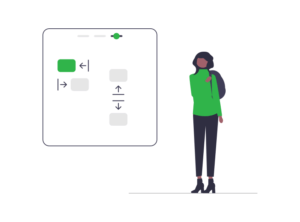
The customer journey consists of multiple customer touchpoints and interactions that occur across different stages. While the specifics may vary depending on your industry and business model, the following stages provide a general framework:
Building a customer journey is an ongoing process that requires constant evaluation and refinement. Here are some additional considerations to ensure a seamless and impactful customer journey:
Remember, building a customer journey is a dynamic process that requires adapting to evolving customer needs and market trends. Regularly review and update your customer journey to stay relevant and continue delivering exceptional experiences.
By building a well-crafted customer journey, you can guide your audience through each stage, from awareness to conversion, and beyond. A seamless and personalized journey cultivates customer loyalty, drives business growth, and positions your brand as a trusted and preferred choice in your industry.
At SEO Succor, we specialize in helping businesses create and optimize their customer journeys. Contact us today to learn more about how we can assist you in building a customer-centric marketing strategy that drives results.
Schedule a complementary consultation with one of our experts.
In the world of digital marketing, delivering the right message to the right audience is key to achieving success. One of the most effective ways to achieve this is by understanding and developing target personas.
Target personas, also known as buyer personas or marketing personas, are fictional representations of your ideal customers. They help you gain a deeper understanding of your audience, their needs, preferences, and behaviors, enabling you to tailor your marketing strategies for maximum impact.
A target persona is a semi-fictional representation of your ideal customer, based on data, research, and insights. It goes beyond basic demographics and incorporates information such as motivations, pain points, goals, and interests.
Developing target personas allows you to create a more accurate and comprehensive picture of the individuals you are trying to reach, helping you craft marketing messages and strategies that resonate with them on a personal level.
Learn more about what makes a target persona, different from a target audience or ideal customer profile.
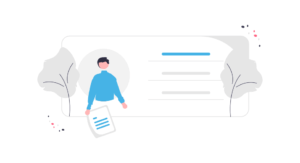
To create effective target personas, follow these steps:
By investing time and effort into creating and understanding target personas, you unlock a powerful tool that helps you connect with your audience on a deeper level. With personalized messaging, focused marketing strategies, and enhanced customer experiences, you can drive engagement, boost conversions, and cultivate strong brand loyalty.
At SEO Succor, we specialize in leveraging target personas to create highly-targeted paid media campaigns.
Reach our to our team to schedule a free initial consultation. We will walk you through your brand’s potential.
We break down the six stages of the sales funnel for just about all of our clients. In this post, we will explain what the sales funnel is and how the modern six step process works.
A sales funnel is a visual representation of the journey a customer takes from becoming aware of a product or service to making a purchase. It is a multi-step process that helps businesses understand how potential customers interact with their brand and how to guide them through the sales process.
There are six steps in the sales funnel, each of which plays a crucial role in converting potential customers into paying customers.
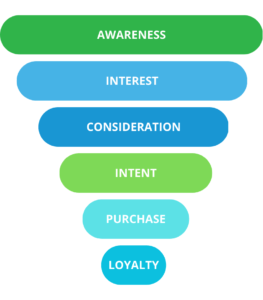
It’s important to note that not all customers go through each stage of the funnel, and some may drop off at different stages. The sales funnel is not a one-size-fits-all, and businesses should tailor their approach to the customer’s behavior and use the funnel as a guide to optimize the customer journey.
To learn more about the sales funnel, our how we can have an impact on yours with performance marketing, reach out to us.
We offer free initial consultations.
Read our client reviews to learn more about us, or our team.
Let us take a look at how performance marketing works, but first it is important for us to define what performance marketing is.
Performance marketing, also know as performance-based marketing or performative marketing, is a type of digital marketing that focuses on measurable results and is based on a cost-per-action (CPA) model. In this model, clients of digital marketing agencies pay for specific actions such as a sale, lead, or click.
This type of marketing is a results-driven approach that allows the client to track and measure the effectiveness of their marketing efforts, and only pay for the results they receive.
In this post, we will first explore four performance models, and then we will talk about other key aspects of this science.
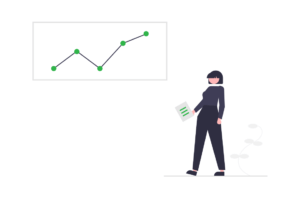
The CPA model is at the core of performance-based campaigns, meaning all other performance models are derivative form of this model. Again, it is a pay-for-performance model where clients only pay for specific actions such as a sale, lead, or click.
The CPA model can be used in a variety of contexts, such as affiliate marketing, cost-per-lead (CPL), cost-per-click (CPC), and cost-per-impression (CPI) advertising.
This term is often used interchangeably with “cost-per-acquisition” in the digital marketing community.
CPL advertising is a form of performative marketing where digital marketing agency clients pay for leads, rather than sales. A lead is a potential customer who has provided their contact information in exchange for a free offer or trial. These types of campaigns are often referred to as “lead gen” campaigns.
CPL advertising can be used in a variety of ways, such as email marketing or webinars, and is often used to generate leads for products or services.
CPC advertising is another form of performance marketing where clients pay for clicks on their ad rather than for specific actions such as sales or leads.
CPC advertising can be used in multiple contexts, such as SEM (search engine marketing), SEO (search engine optimization), or display advertising, and is often used to drive traffic to a website.
CPI advertising is another form of performance marketing where clients pay marketing agencies for impressions (the number of times an ad is viewed).
CPI advertising can be used in a variety of contexts, such as display advertising or social media advertising, and is often used to increase brand awareness. It can also be used to increase product or service awareness.
Affiliate marketing is a form of performance-based marketing where advertisers pay affiliates, or marketing partners, a commission for driving a specific action, such as a sale or lead. Affiliates promote the advertiser’s products or services on their own website or through other channels such as email or social media.
The mission of affiliates is to generate sales through referral traffic.
Affiliates are typically rewarded based on the CPA model and only earn a commission when a specific action is taken.
With performance contracts written to favor the marketing agency only after client goals are met, the pay-for-performance pricing model is the most unique aspect of performance-based marketing services. Because of this, proper implementation of web analytics is absolutely essential in order to track user interactions with web properties.
Performance-based marketing relies on tracking and measurement to determine the effectiveness of marketing efforts. Marketing agencies use tools such as web analytics, conversion tracking pixels, and attribution modeling to track and measure the performance of their marketing efforts.
Accurate web analytics allows agencies and their clients to identify which marketing channels and tactics are most effective, and adjust their strategy accordingly. Likewise, they also enable the marketing agency to charge for performance.
Performative marketing is an iterative process, and optimization is a crucial aspect of it. Digital marketing agencies use the data they collect to optimize campaigns and improve their performance over time, on the client’s behalf.
These optimizations can include adjusting targeting, refining the messaging, and testing different creative elements.
You can see, this is a results-driven approach that focuses on measurable results and a cost-per-action (CPA) model, which can be incredibly enticing for organizations focusing on growth, as well as the bottom line.
Performance payout models tend to be written to favor the client, focusing on the client’s return on investment.
SEO Succor offers a complete team of performance marketing experts, obsessed with hitting target KPIs for clients. Our team brings diverse experience to your organization overnight, helping you to scale your marketing efforts.
Reach out to schedule a free initial consultation.